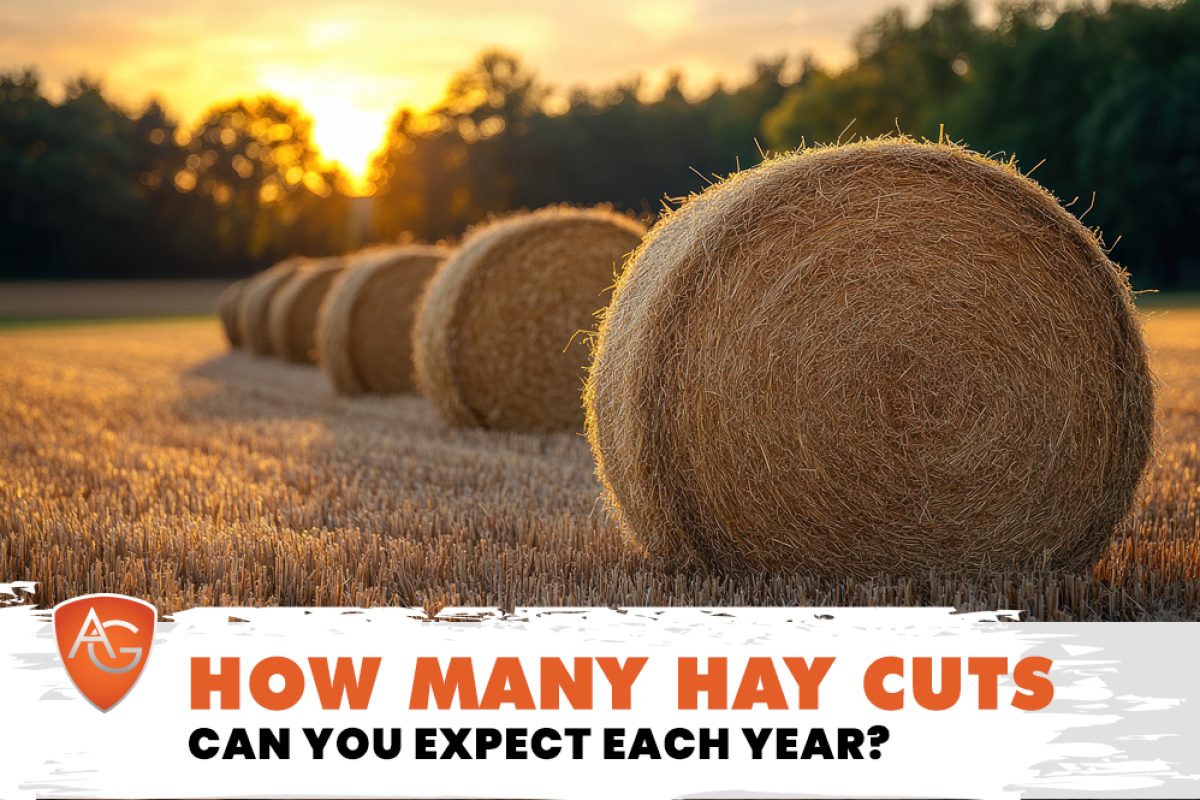Overview: Wondering how many hay cuttings you can get per year? Learn how climate, hay variety, and soil management impact your yield and maximize your hay production. Read on!
When it comes to producing high-quality hay, one of the biggest questions for farmers and ranchers is: How many hay cuttings can you get in a year? The answer isn’t one-size-fits-all — it depends on a combination of factors, including climate, hay type, soil conditions, and management practices.
Let’s break it down so you can maximize your yield.
Key Factors That Influence Hay Cuttings
Geographic Location & Climate: Your region’s growing season plays a major role in how many times you can cut hay. Warmer climates with longer seasons — like parts of the southern U.S.— can see three to five cuttings per year. In cooler climates, like Wyoming and Northern Colorado, most farmers typically get one to three cuttings per year due to shorter summers and unpredictable weather.
Hay Variety Matters: Some types of hay recover and regrow faster than others. Here’s what you can expect from common hay types:
-
-
Alfalfa – Known for its aggressive regrowth, alfalfa can produce three to five cuttings in warmer regions and two to three in cooler areas.
-
Timothy Grass – Slower growing, typically yielding one or two cuttings per year.
-
Orchard Grass & Brome Mixes – Generally produces two to three cuttings, depending on moisture and soil fertility.
-
Wheat & Cow Hay – Usually cut once or twice per season.
-
Soil Fertility & Management: Healthy, well-managed soil leads to better regrowth. Implementing proper fertilization, irrigation, and rotational cutting will improve yields. Alfalfa, for example, thrives on well-fertilized soil with good drainage.
Rainfall & Irrigation: Moisture is critical for hay regrowth. Regions that rely solely on rainfall may struggle with multiple cuttings, while irrigated fields can often sustain an extra cutting or two per year.
Cutting Schedule & Management: Timing matters. Cutting hay too early can weaken regrowth, while delayed cuts can result in lower-quality hay. The ideal approach is to cut at the pre-bloom or early bloom stage for maximum nutrition and regrowth potential.
Maximizing Your Hay Yield
Test Your Soil Regularly – Proper fertilization keeps fields productive.
Time Your Cuttings Right – Avoid cutting too early or too late.
Rotate & Reseed – Over time, some fields need rejuvenation for higher yields.
Invest in Irrigation – If possible, irrigation can make a major difference in yield potential.
>> Related Reading: Tips to Improve Hay Production This Spring
What’s the Bottom Line?
For most farmers in Laramie County, WY, and Northern Colorado, hay producers can expect one to three cuttings per year depending on hay type and moisture availability. If you’re working with fast-growing varieties like alfalfa and have access to irrigation, you might squeeze in that extra cutting to maximize your yield.
If you’re looking for high-quality hay, whether it’s North Park Timothy, Orchard/Brome/Alfalfa mixes, or straight alfalfa, we’ve got you covered. Reach out to All Around Ag for reliable hay supply and expert advice on making the most of your hay fields.
